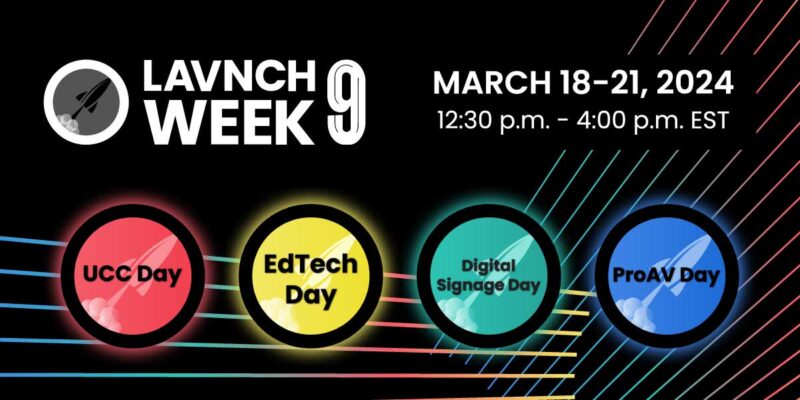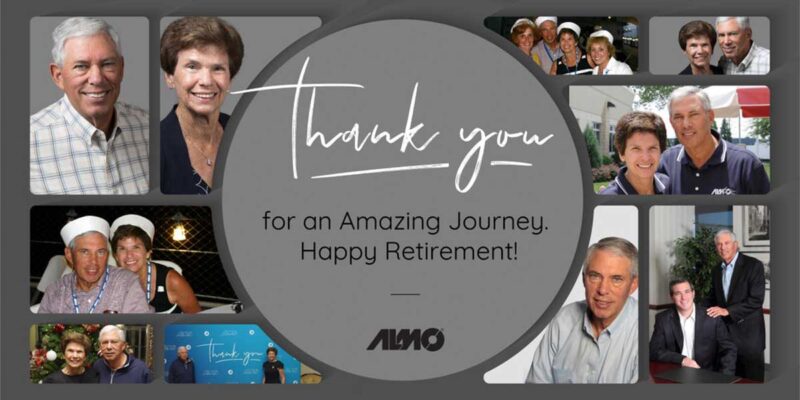Almo E4v Roundup Part 3: What Next-Gen Workspaces Look Like
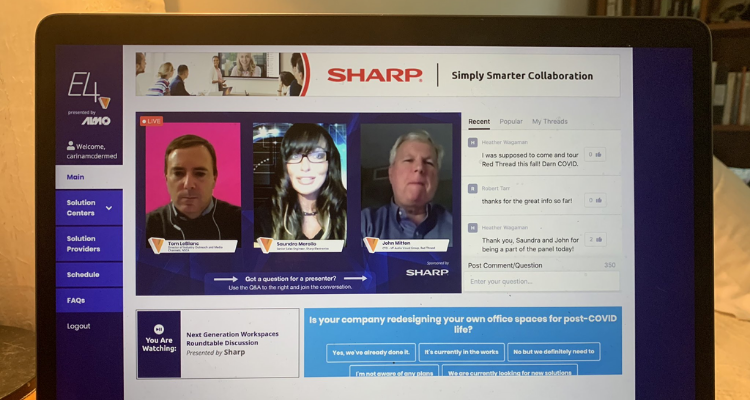
On Tuesday, we brought you live coverage on day one of Almo Professional A/V’s fall E4v (gut check: here and here). Wednesday, we were back for what Almo promised would be a very exciting day two. Looking at the day’s lineup, we had to agree.
E4v Oct. 28 Lineup – Live Sessions:
- Workplace Design in a COVID Era – A Designer’s Perspective (Kay Sargent, HOK)
- Integrating AV Systems to Accommodate Gen Z and Millennials (Gary Kayye, THE rAVe Agency)
- How We Can Rethink Audio for the Future of AV (Chuck Espinoza, AVIXA)
- NSCA Roundtable — Next-Generation Workspaces (Tom LeBlanc, National Systems Contractors Association; Saundra Merollo, Sharp; John Mitton, Red Thread)
You’ve landed upon our roundup on the Next-Generation Workspaces portion of the show. Which was, to me, one of the most exciting parts of E4v — because surely you’re interested in all the fun complexities of designing AV systems that tailor to four-plus generations coexisting in the workplace? With COVID-19 in the mix too, the Next-Gen Workplaces part of E4v was much-needed to help us level-set on where we are today, understanding how we can better integrate tech for people of different ages … on top of a pandemic.
Our wrap-up of the E4v Next-Generation Workspaces Solution Center — part four of five in an E4v recap series — is below. You’ll enjoy this one.
Workplace Design in a COVID Era — A Designer’s Perspective
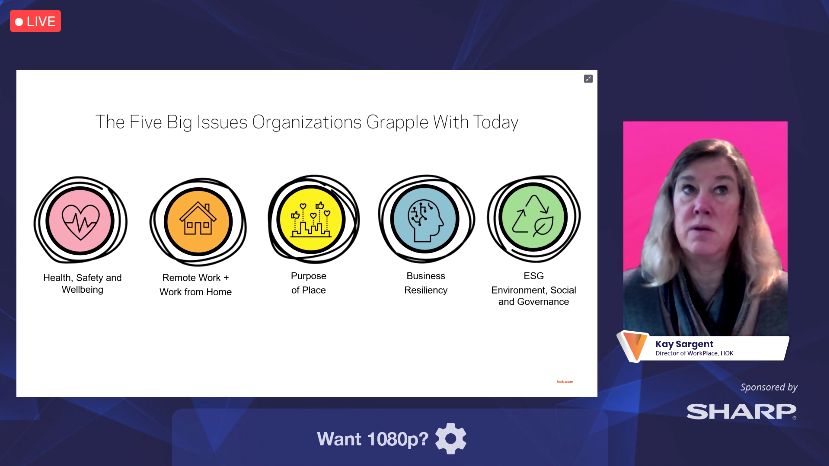
What are next-generation workspaces anyway? How about we ask a workplace-design expert with more than 35 years of experience shaping workplace design and strategy?
Kay Sargent is the senior principal and director of the WorkPlace practice at HOK, and her talk today, “Workplace Design in a COVID Era — A Designer’s Perspective,” helped us understand how to define how, when and where people work with technology. Remember: all this is on top of a pandemic.
Working from home before COVID-19 was accepted by some but not practiced by many, Sargent explained. That’s now shifted.
“Most people are running on adrenaline right now,” Sargent said.
(I’d also like to argue that it’s adrenaline plus an unhealthy amount of coffee. But yes.)
A few of Sargent’s callouts as related to the work-from-home movement this year:
- When sent home, people wanted to be visible to their bosses and managers. Now, Americans are spending, on average, one to three more hours a day working.
- Without good infrastructure, working from home is more challenging for many.
- Everyone assumes younger generations are better at working from home, but studies are showing otherwise.
Being productive (e.g., having an empty email box) isn’t the only thing we’re concerned about right now; we’re also very concerned with collaboration, mentorship and innovation in a remote or hybrid setting. We started seeing a dip in productivity in August, Sargent explained, as people started hitting a wall — maybe these are the people who are not well-suited to work from home, she proposed. As we roll into the winter, Sargent continued, companies are bracing and understanding the importance of helping people feel connected to the organization now more than ever.
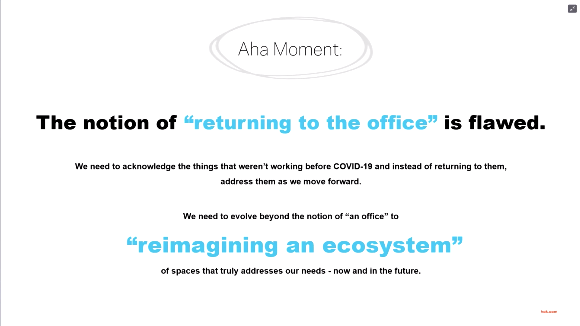
Sargent thinks people may be overestimating how successful fully remote work will be. Because, actually, a ton of people can’t, don’t want to, or are not well-suited to work from home. Thus, it should not be a binary choice, she argued: Remote work should be a part of the full working ecosystem — to different degrees for different companies.
“People who are always remote or always in the office tend to be the least engaged,” Sargent explained.
Disruption has caused industry after industry to evolve. Sargent’s “aha moment,” referring to people’s desire to “get back to the office”: Why do we want to go back to something that wasn’t working that great in the first place?
Sargent continued by explaining a reimagined three-pronged ecosystem of home, spoke and hub. (The best way to understand the breakdown is to go back and register for E4v, then watch her presentation.) But the gist is that we need to rethink what wasn’t working before before we just drop everyone back in their regular seats at the office with (very bad for the environment) plexiglass barriers installed between desks. We need to embrace the opportunity to address the disruption being brought forth. We need to proactively rethink how we can best serve our clients, companies and the workforce.

“This could truly be our Kodak moment,” Sargent said. “The entire world is looking at us and asking, ‘What is the future of work?’ …. If we don’t disrupt our industry, somebody else is going to do it for us,” Sargent said.
The AV industry currently has the opportunity of a lifetime: to create a reimagined office that produces an amazing experience — one that is worth coming to.
Integrating AV Systems to Accommodate Gen Z and Millennials
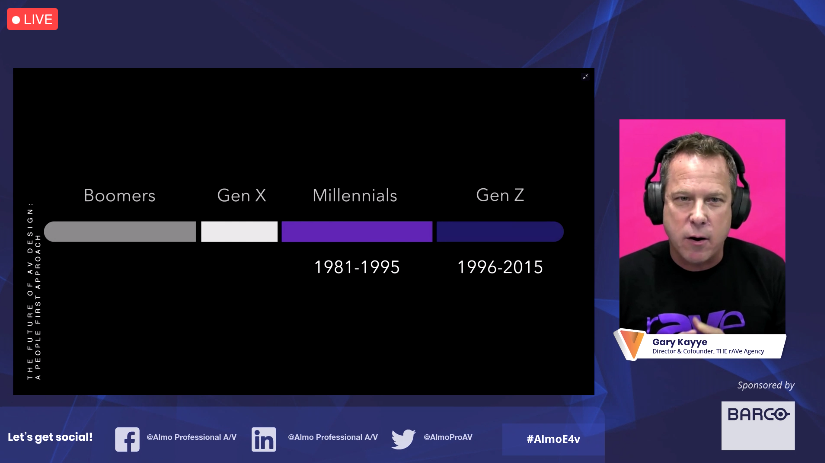
Gary Kayye led our next E4v session Wednesday, “How to Integrate AV Systems to Accommodate Gen Z and Millennials.”
With 4K (for resolution) and lasers/LED (for color) converging together today, he led, our industry has done an amazing job not only with product but also with technology. The question is, How are we doing with people? One challenge in specifying systems for new generations is working with the right departments to get it done — like IT.
Just one problem.
IT companies tend to think AV companies are a few not-so-positive things: complicated, non-standard, arrogant (ouch), problematic and transactional. But IT doesn’t want to control AV, Kayye argued. They just want to own it (e.g., make all the decisions for their own systems with regard to AV). One approach we can take is to sell to IT to reiterate their department’s job security.
“#IT doesn’t want to own #AV, they just want to control it.” – @gkayye during his presentation about serving #GenZ with technology on Day 2 of @AlmoProAV’s #E4v.
What do you think, #AVtweeps? #AVisLIFE pic.twitter.com/2N2eEqe6XR
— rAVe [PUBS] (@rAVePubs) October 28, 2020
Now, onto the topic of getting into the heads of Gen Z and millennials: It starts by leading with processes and workflows instead of the technology and products, Kayye continued. That’s much easier said than done, but Kayye argues it’s imperative. We have to rethink the way we design systems to accommodate Gen Z and millennials, because they’re not going to change what they grew up learning and knowing.
New generations coming into the workplace can be quite different from each other too, Kayye pointed out. He explained some differences between millennials and Generation Z, then followed with some similarities between the two: like how collaboration is natural for both millennials and Generation Z. (Also, they’re both digital-first and mobile-first.) Both younger generations will also always take the most efficient route in regards to technology — in the case of working styles, that often means joining meetings online, versus going into the office.
Knowing all this, what do we do in our AV systems to tailor to these younger generations but not alienate boomers? A few of Kayye’s touch points and suggestions:
- We need not-complicated walk-up-and-use systems.
- Everything needs to be connected. Younger generations want technologies between work and home to be seamless, and they don’t like heavy differences between technology in the office and elsewhere. They want the same technology features in different environments.
- They want native collaboration — like Google Docs.
- they want active-learning rooms that can be changed around on the fly and used however they want.
- They want content on their desktop and/or their primary machine. Why would they solely want to look at the front-of-room projector content when they can look at the content right in front of their face, on their own device? Younger generations love the ability to recast the information to their own devices.
- If we do BYOD, it needs to be easy to “turn on.” Sometimes, millennials and Gen Z want it even easier than the button approach — what bout NFC and IoT sensors?
- Create digital canvasses. You’ll find that younger people’s desktops include scenes with five-plus applications up at once. If it’s possible to put content up simultaneously in the workspace (as younger generations do on their own devices), do that.
- Give millennials and Gen Z the ability to send content anywhere.
- Consider interactivity — which can also be driven by personal devices.
- Think auto archival and AV on the cloud. Kids love the idea of auto-archiving — saving info and making it available everywhere, not just on one device.
- Think full ecosystems (as opposed to interoperability), like Apple. Younger generations want the full ecosystem to work seamlessly, which is good enough for them; they don’t need every device on different ecosystems to get along. They just want THEIR ecosystem devices to get along.
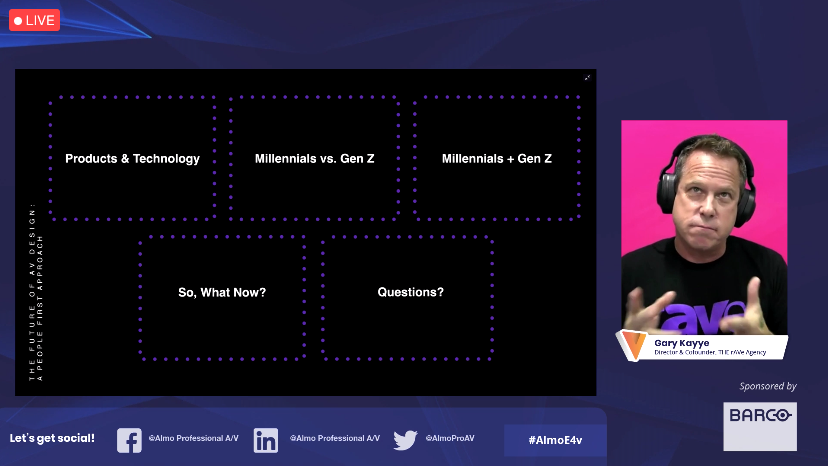
Putting some concrete technology into your heads, even though younger generations don’t know what these are technologically, here’s what Kayye says will be big on the AV front:
- AV-over-IP: putting AV on the network.
- True plug and play and USB-C connectivity. Also, the content player on the network: where we can send content anywhere, as long as we have a player for it — even if the player is just a browser.
- Signage, signage and more signage: Better known as signage.
- AR-assisted control and AI-assisted rooms. Younger generations grew up using consumer-based augmented reality, like Snapchat. This will be a great opportunity to rebuild systems so users can control systems in the rooms themselves.
- VR meetings: Younger generations will want to continue working from home. Explore VR as a possibility to suit them.
In every segment of ProAV, you’ll also see a lot of adoption in voice and IoT, Kayye thinks. An important note here: Consumers are inevitably going to make more decisions for ProAV — whether we like it or not.
That’s a Wrap on E4v Day Two
After a lively NSCA roundtable (again, the best way to get the scoop on that is to register for E4v — post-event registrations will be available for a short time only), we reflected on a great second day of live E4v content.
Attendee Chris Salazar-Mangrum said, “Well done on the Next Generation Workspaces! Great insights on the short/long term direction of tech, workspaces and people.”
It was time to explore the six E4v Solution Centers. One of Wednesday’s featured Solution Centers was Next-Generation Workspaces (hence this wrap-up article), and featured content included:
- Using Design Thinking to Address Product Development
- How Do USB-C and BYOD Serve Millennials and Gen Z Better?
- How and What New Tech Appeals to Millennials and Gen Z
Also interesting was the breakdown of the Next-Gen Workspaces “Product Solutions”: including displays, cameras, presentation/sharing solutions, projectors, connectivity solutions and more.
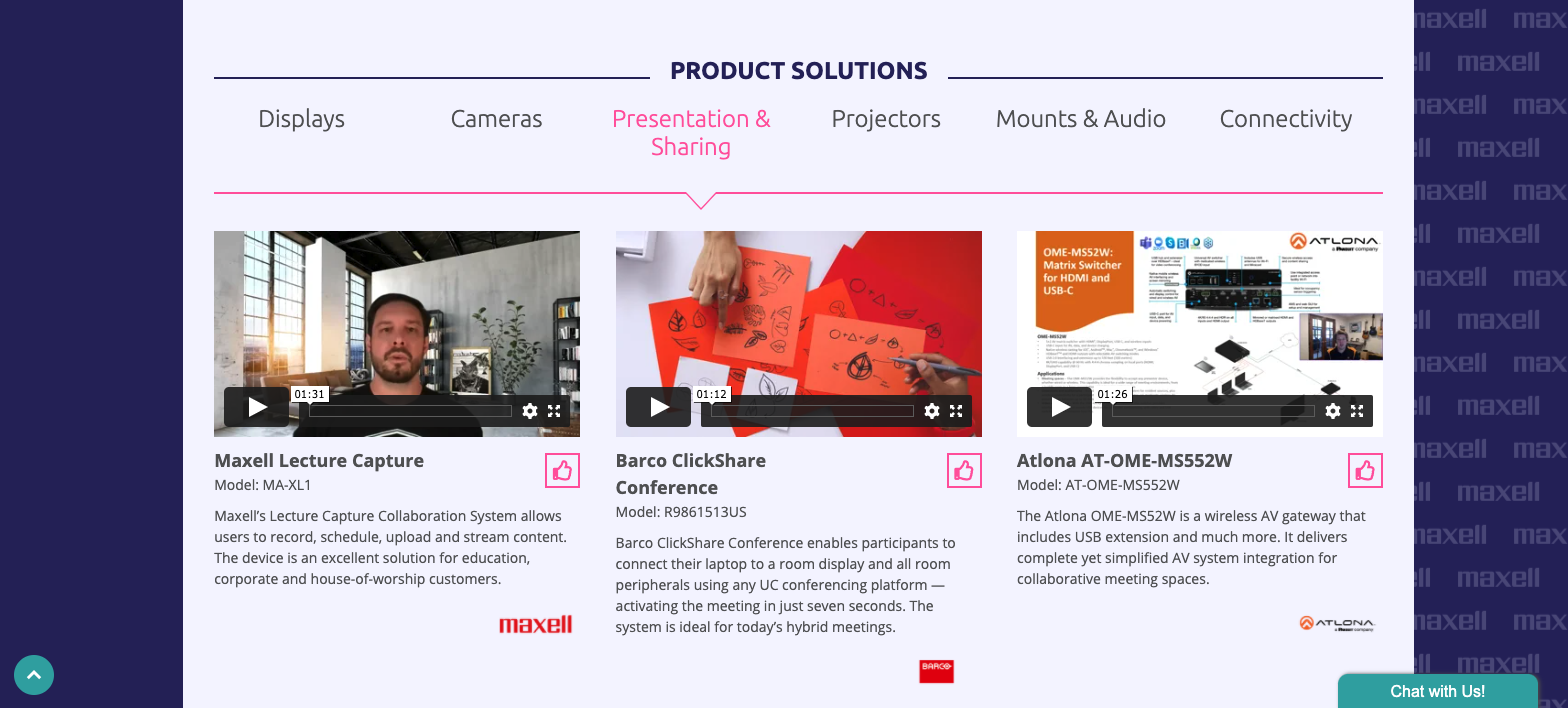
A screen shot of Almo E4v’s Next-Gen Workspaces Solution Center interface
If you missed day two of Almo’s fall E4v, register to sign up here: https://e4evolution.com/. (Post-event registrations will be open for a short time.)




